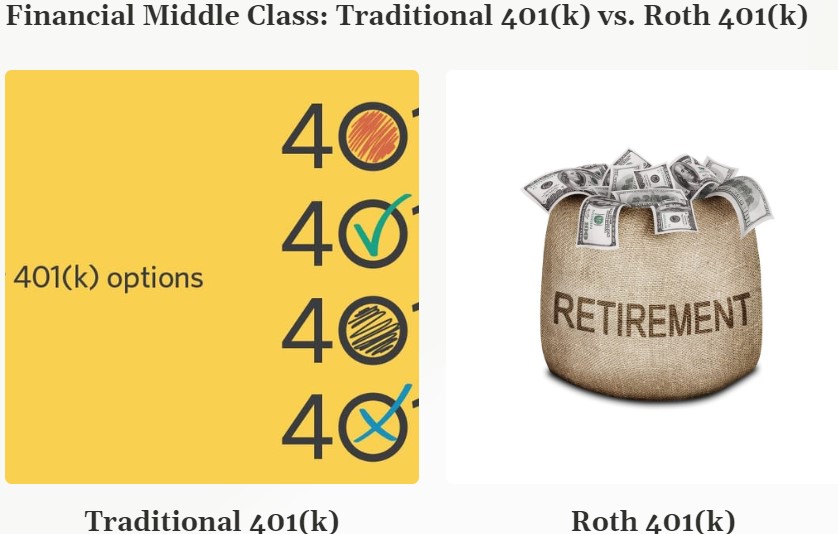Traditional 401(k) vs. Roth 401(k): Which Is Better for You?
When it comes to planning for those golden years of retirement, you have numerous tax-deferred accounts you can use to park your retirement savings. Two of the prominent pathways that you might consider are the traditional 401(k) and its more recently introduced counterpart, the Roth 401(k), which went into effect January 1, 2006.
If presented with the choice between the two by your employer, embracing both might be a strategy worth considering. This approach not only diversifies your investment but also affords you flexibility when it comes to tax implications.
Let’s delve deeper into the nuances of each plan to understand how you can potentially make the most out of your retirement savings.
Traditional 401(k): Pre-tax Contributions and Deferred Tax Benefits
The traditional 401(k) plan is a popular retirement saving scheme that stands out due to its immediate tax benefits.
When you contribute to a traditional 401(k), your contributions are made with pre-tax dollars, which essentially means you get a tax break upfront. This arrangement serves to reduce your current annual income tax bill, allowing you to invest more of your income.
Furthermore, both your contributions and any earnings from the investments grow tax-deferred, which means you won’t have to pay taxes on this growth annually.
Instead, you will settle your tax dues upon withdrawal, which are considered ordinary income, at your then-current tax rate. Do note that depending on your residential state, there might be state taxes to contend with as well.
Additionally, unless certain conditions are met, withdrawals made before the age of 59½ may incur a 10 percent penalty.
Roth 401(k): Post-tax Contributions and Tax-free Withdrawals
Conversely, the Roth 401(k) flips the script on the taxation structure of the traditional 401(k). Under this plan, contributions are made using after-tax dollars, which means you don’t receive any immediate tax breaks. However, this setup comes with significant advantages when you reach the golden age of retirement.
The Roth 401(k) allows for tax-free withdrawals of both contributions and earnings once you reach the age of 59½, provided the account has been held for at least five years.
This benefit can be particularly valuable in safeguarding your retirement savings from future tax hikes, offering you peace of mind and financial security in your later years.
Crafting Your Personalized Narrative: Leveraging the Best of Both Worlds
Given the distinctive benefits that each plan offers, a savvy strategy would be to allocate your contributions to both a traditional and a Roth 401(k) if your employer permits it.
This strategy aids in not only diversifying your investment portfolio but also hedging against the uncertainties of future tax legislation.
Moreover, by having a foot in both camps, you can strategically plan your withdrawals in retirement to minimize your tax liabilities.
For instance, you might choose to withdraw from your traditional 401(k) in years when you anticipate being in a lower tax bracket while tapping into your Roth 401(k) during years of higher income to avoid increased tax implications.
Conclusion
When it comes to securing a financially stable retirement, having options can be a significant asset. While the choice between a traditional and Roth 401(k) hinges on individual financial circumstances, embracing both plans can potentially offer a balanced approach to retirement savings.
By understanding the tax implications and benefits of each, you can craft a retirement savings strategy that is both flexible and optimized for your financial well-being.
Therefore, if your employer provides the option, consider embracing the diversification and flexibility offered by utilizing both the traditional and Roth 401(k) plans, paving the path for a financially secure and prosperous retirement.

Pingback: Roth IRA vs. Roth 401(k): Which Is Better for You? - FMC